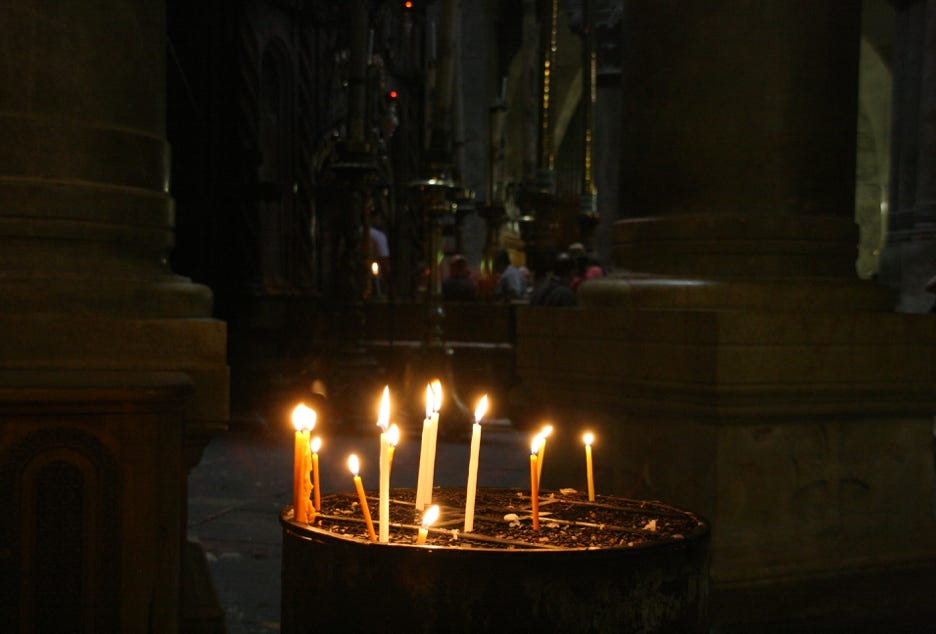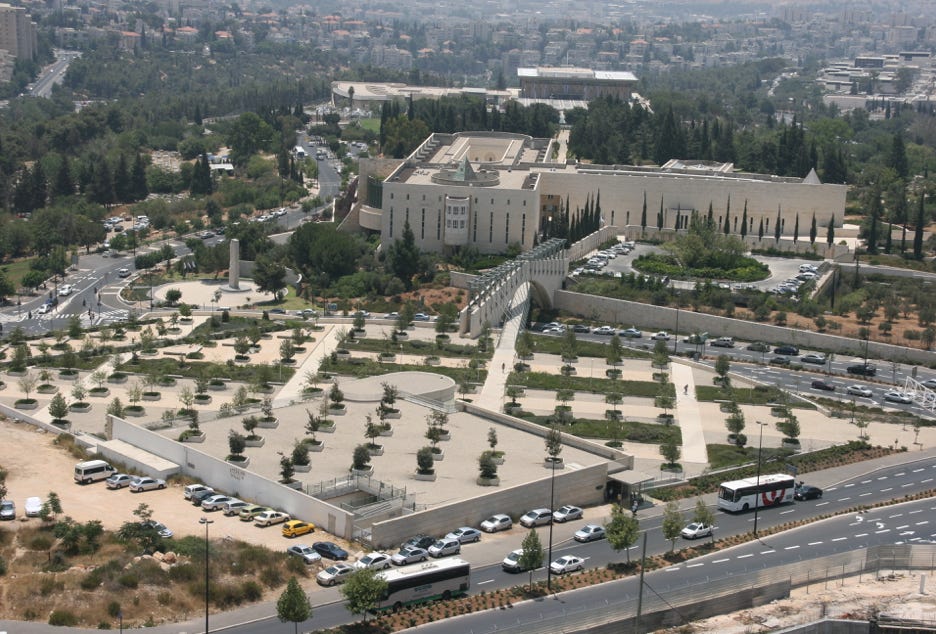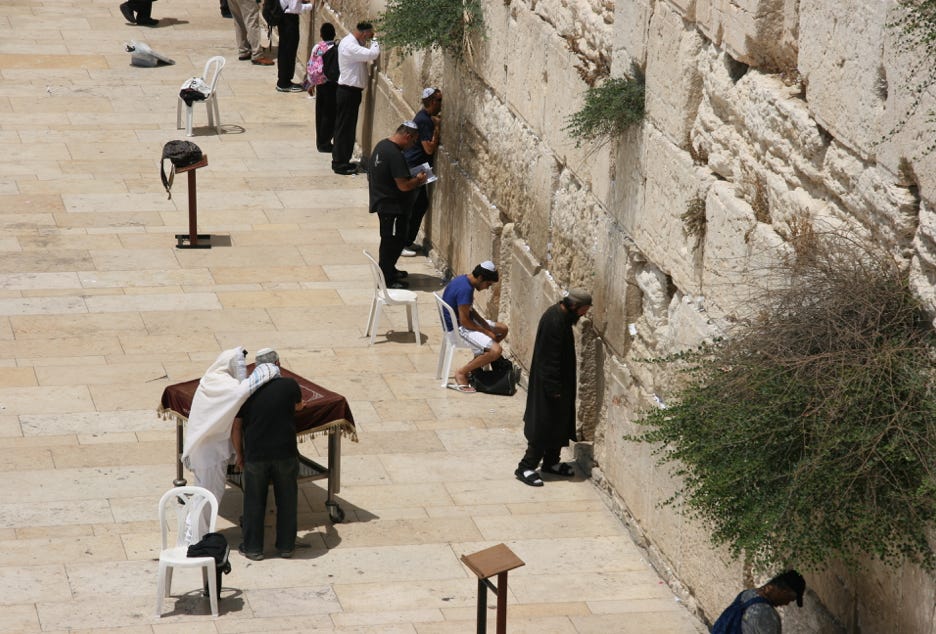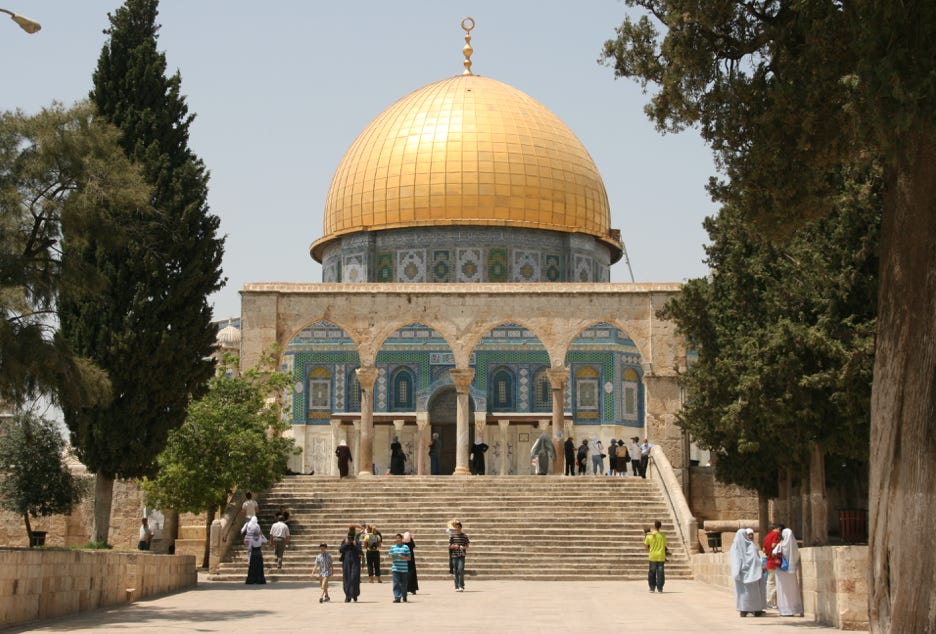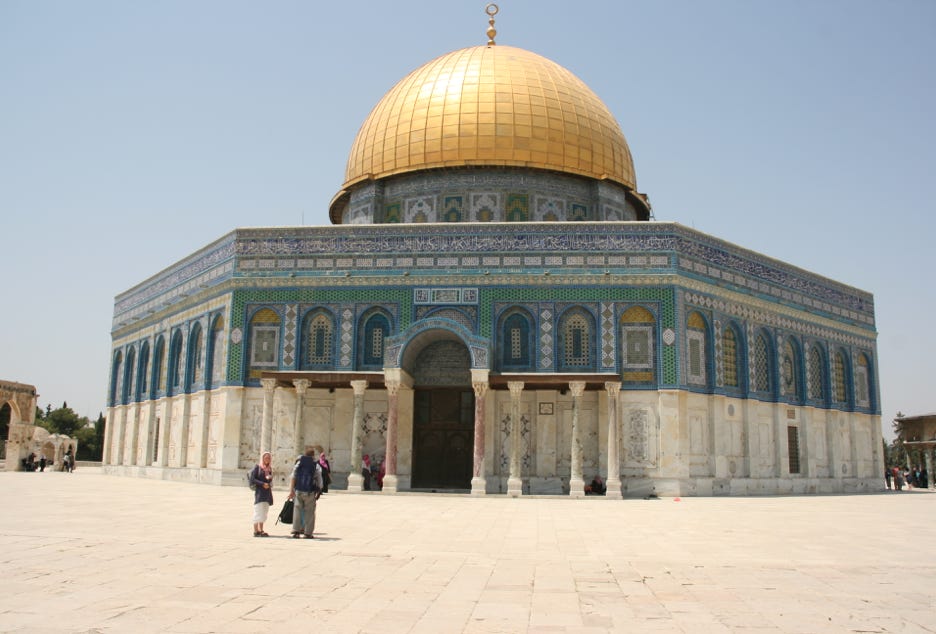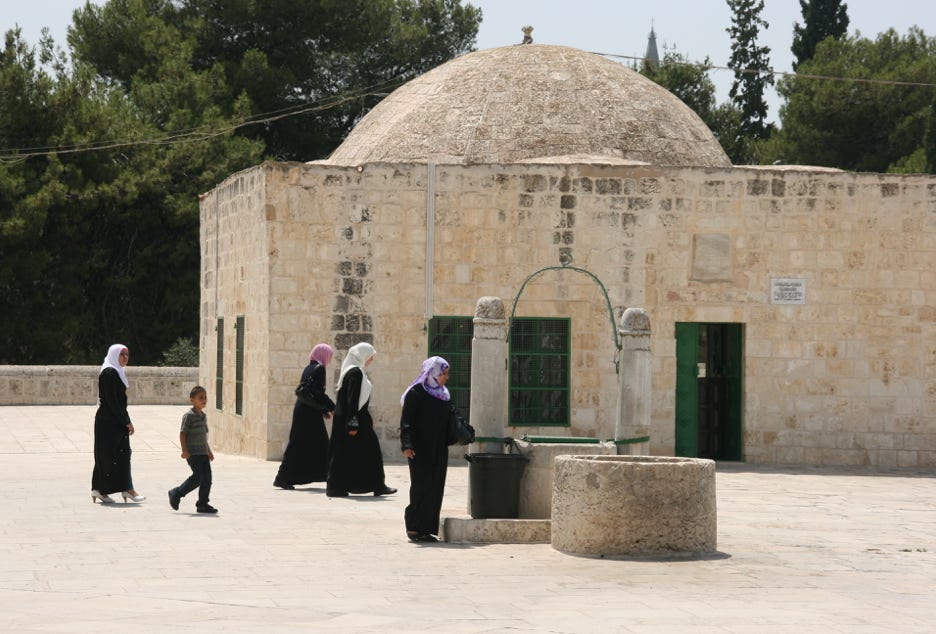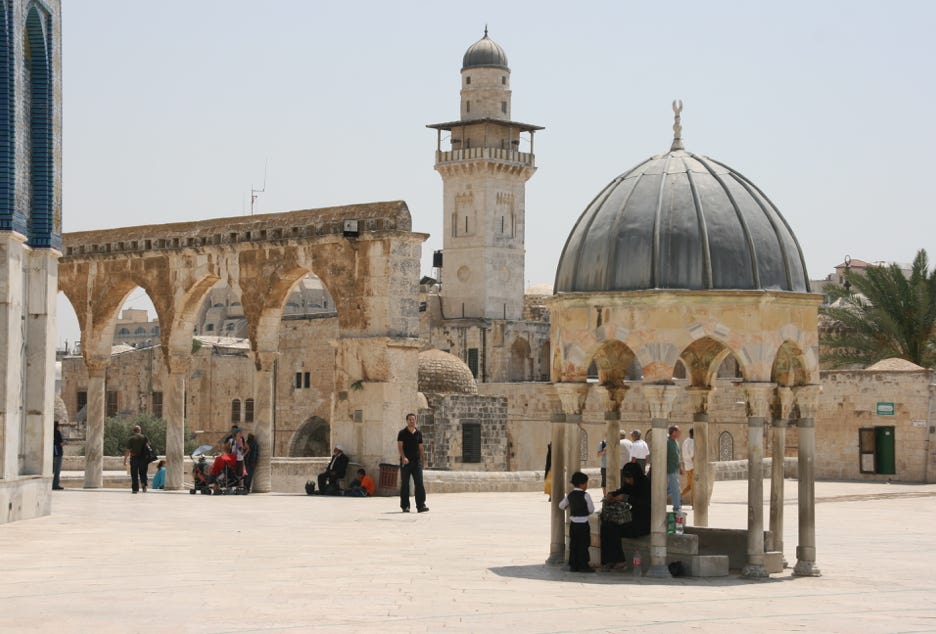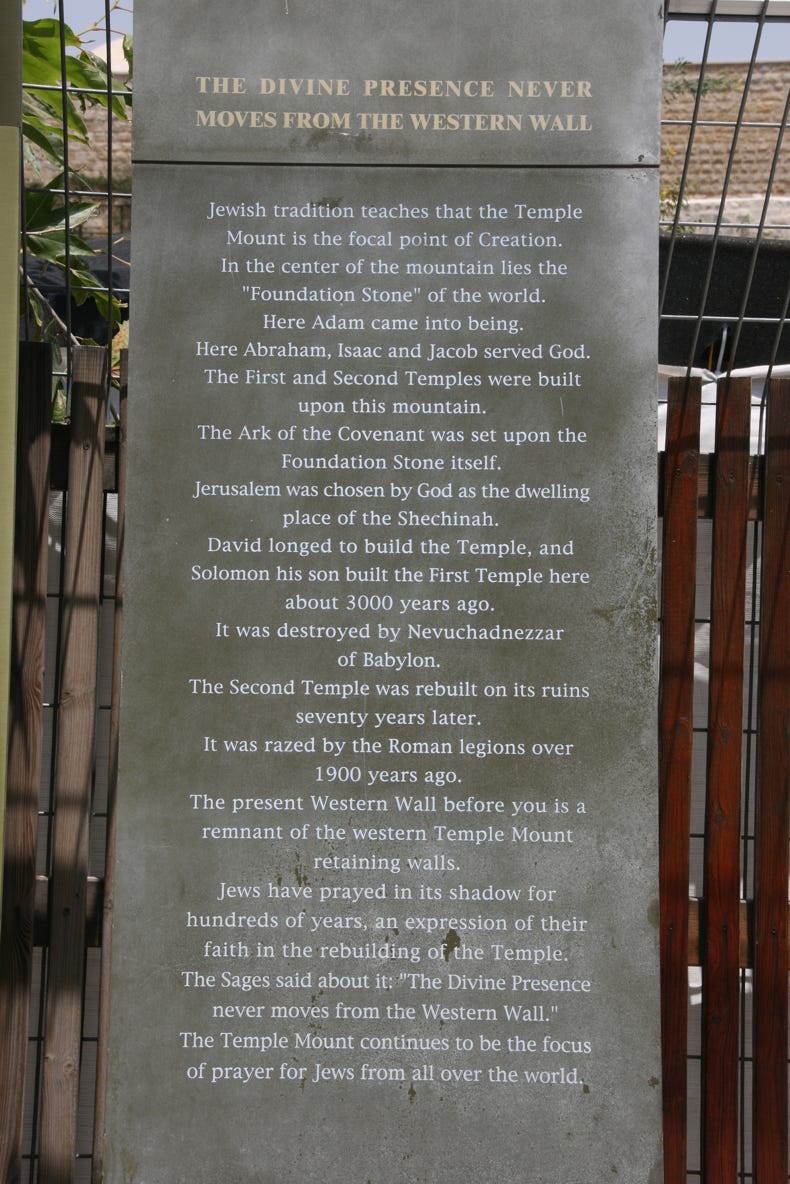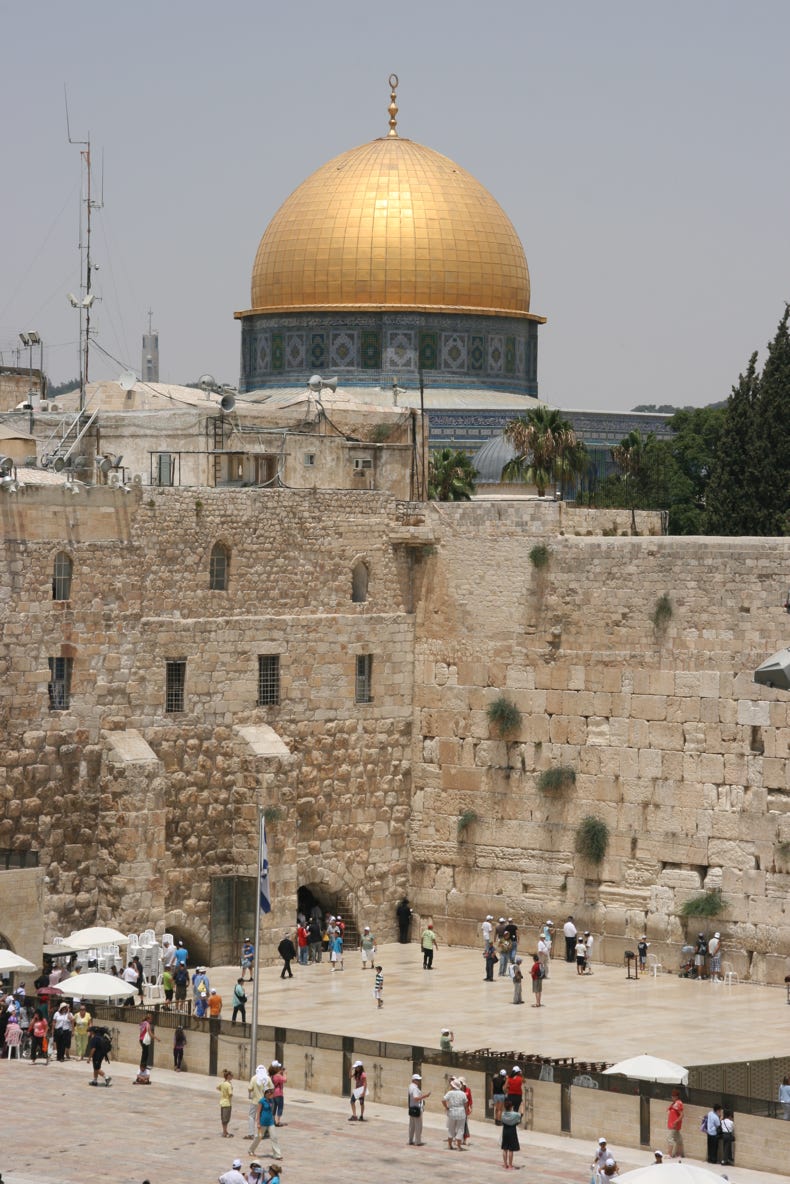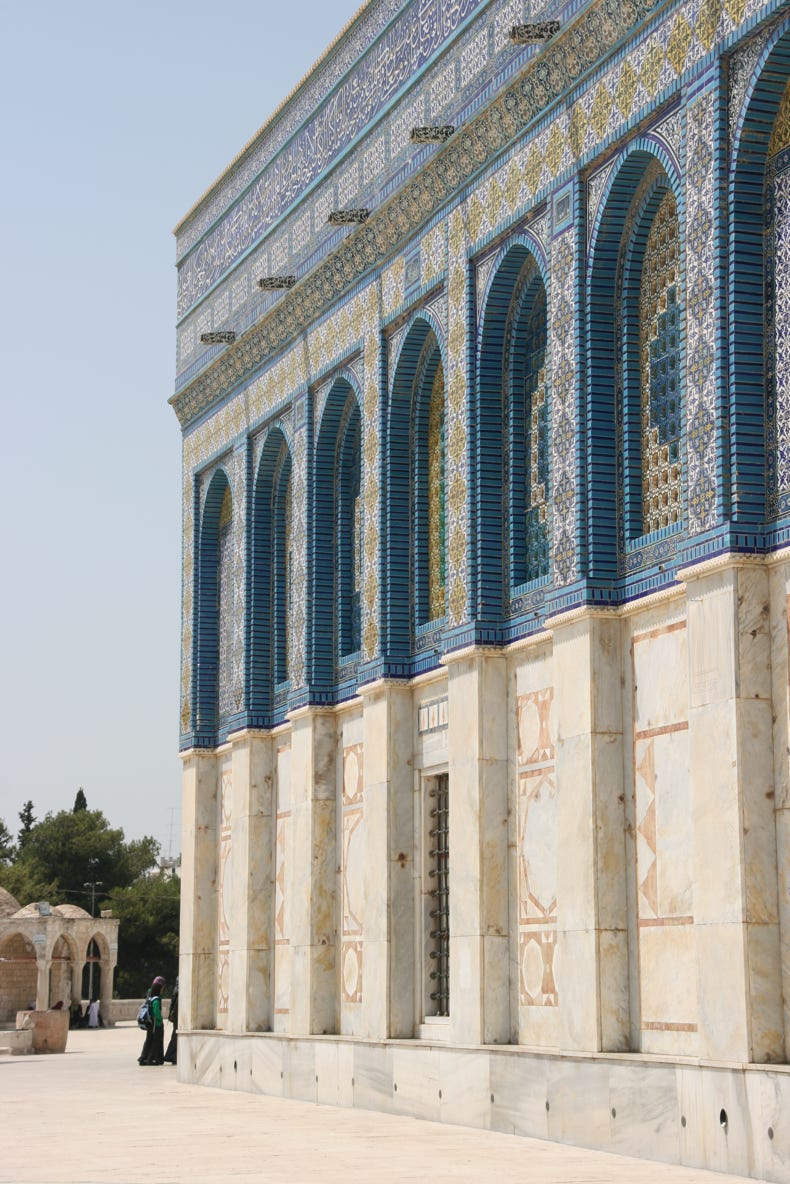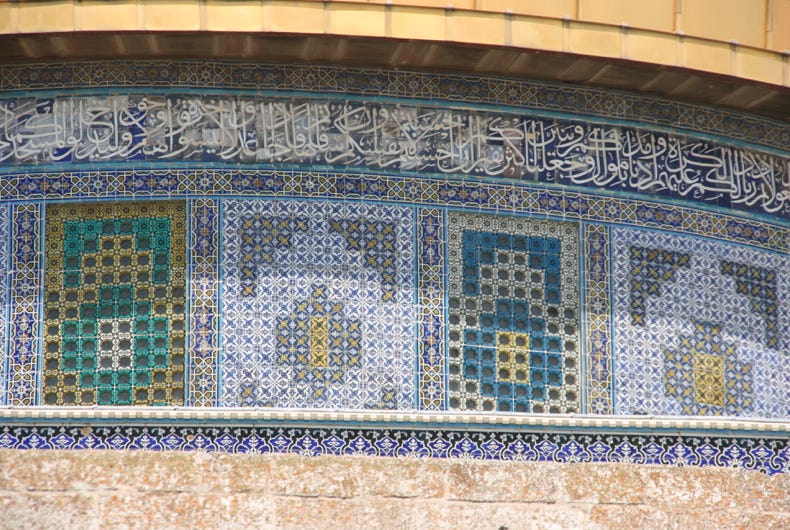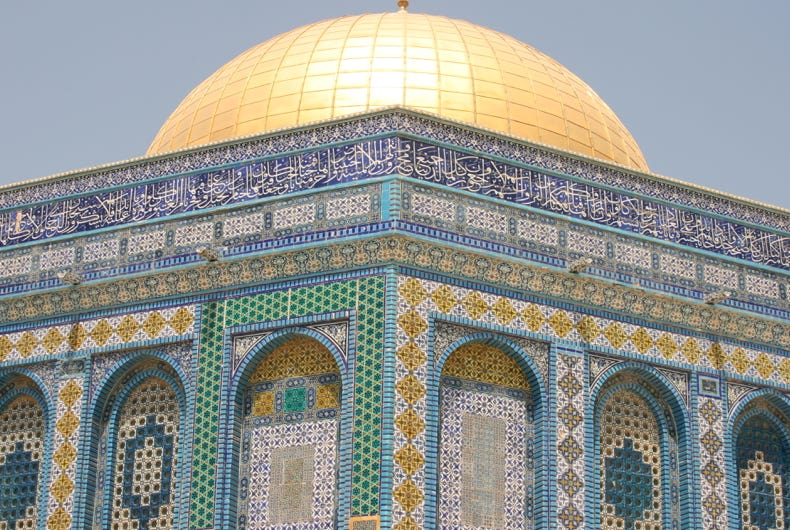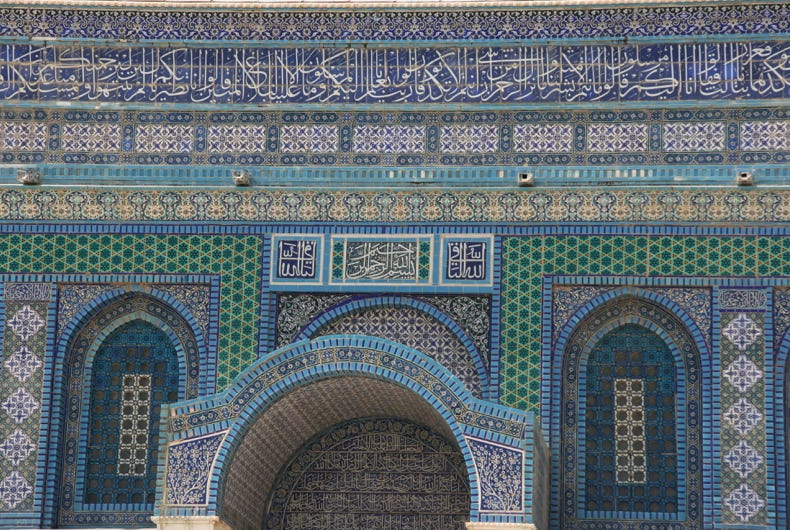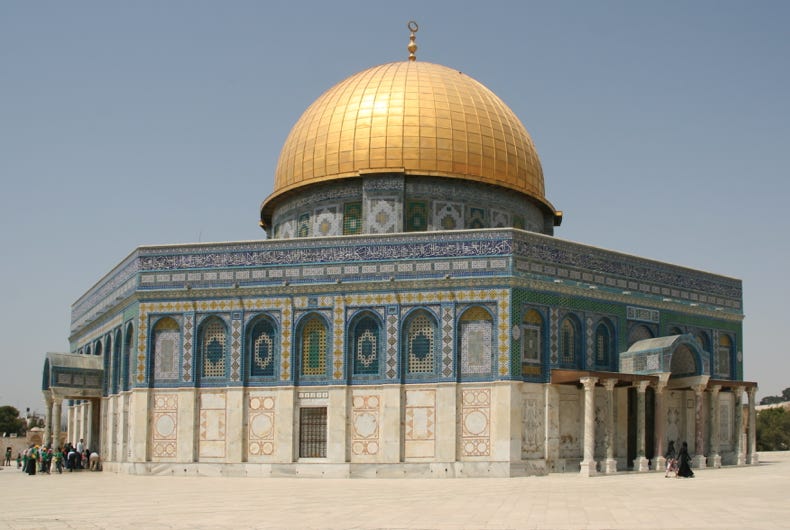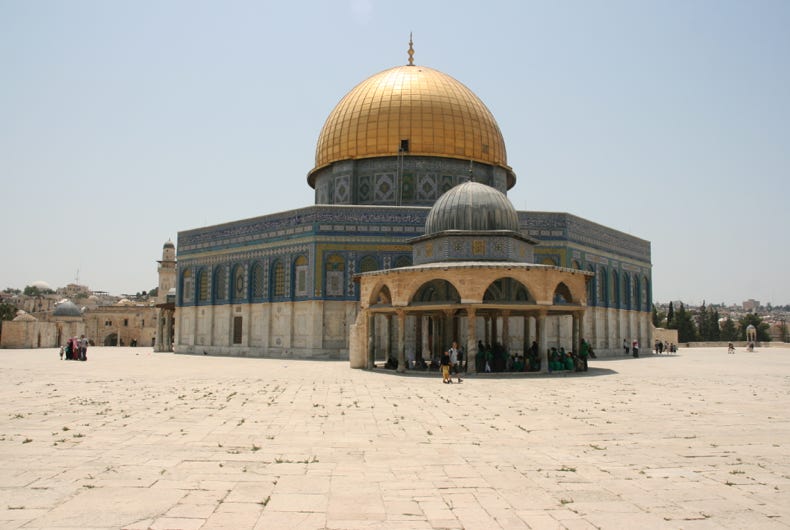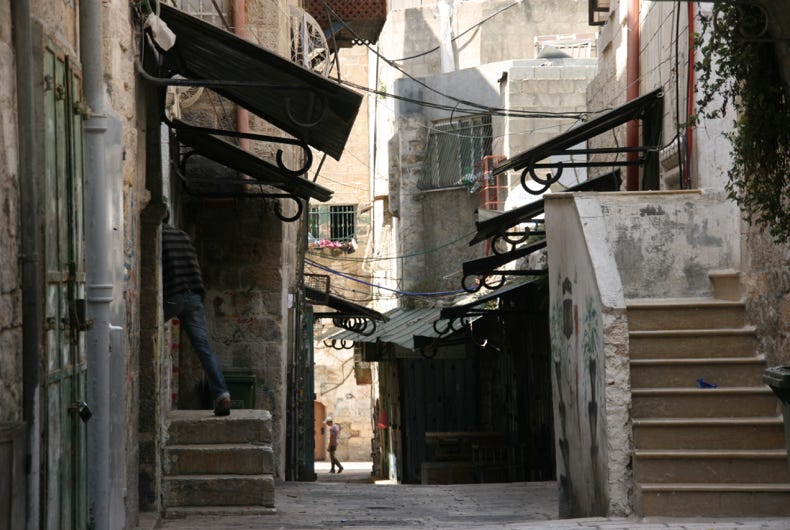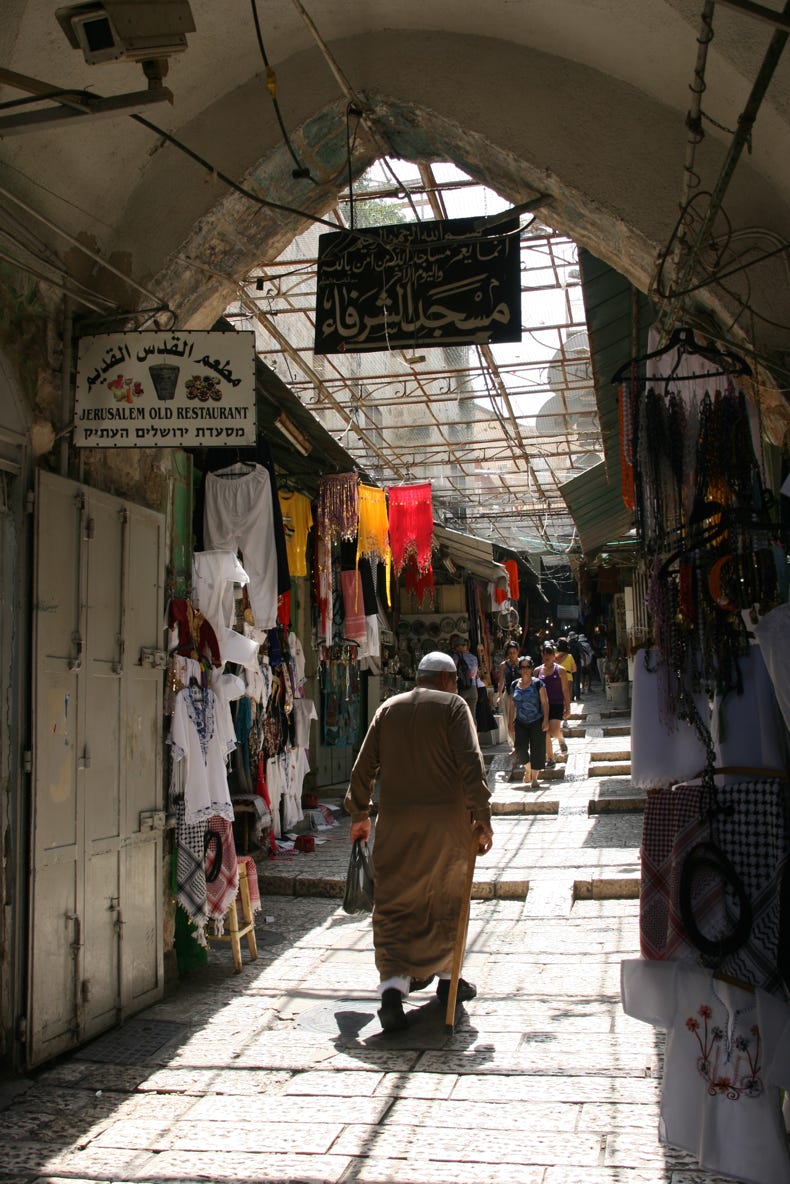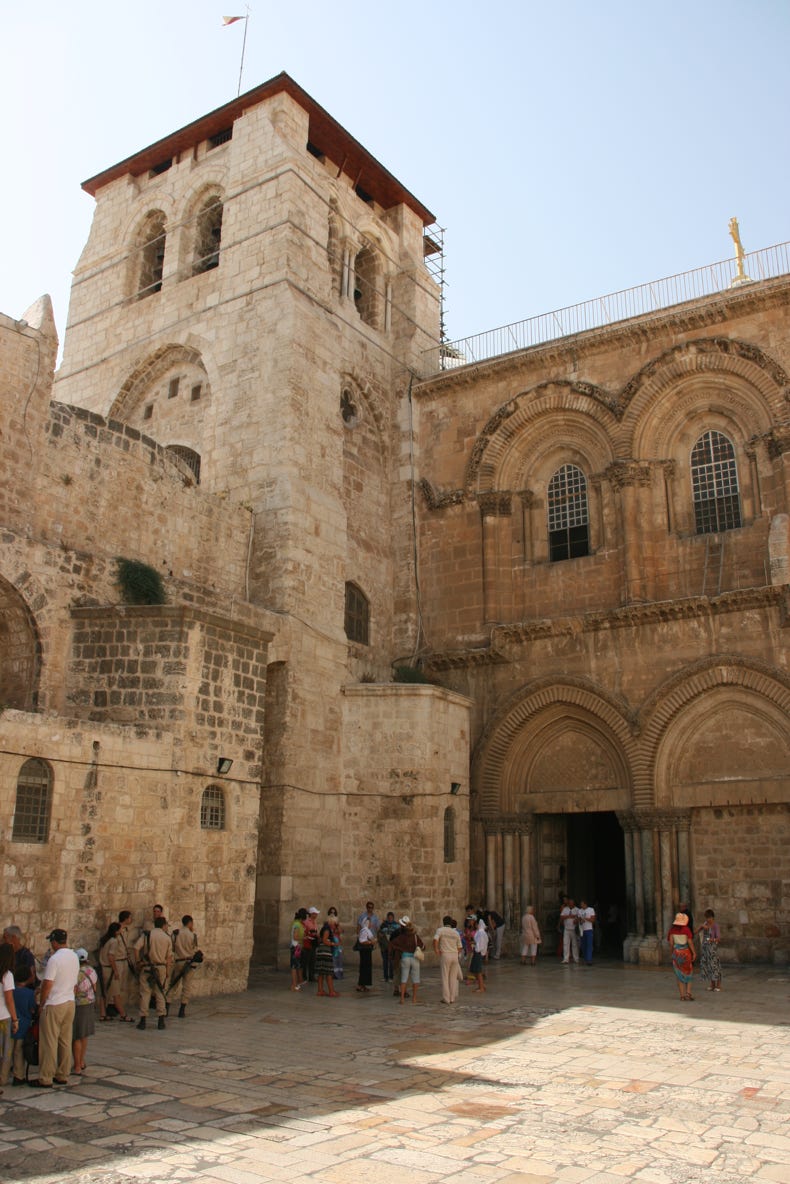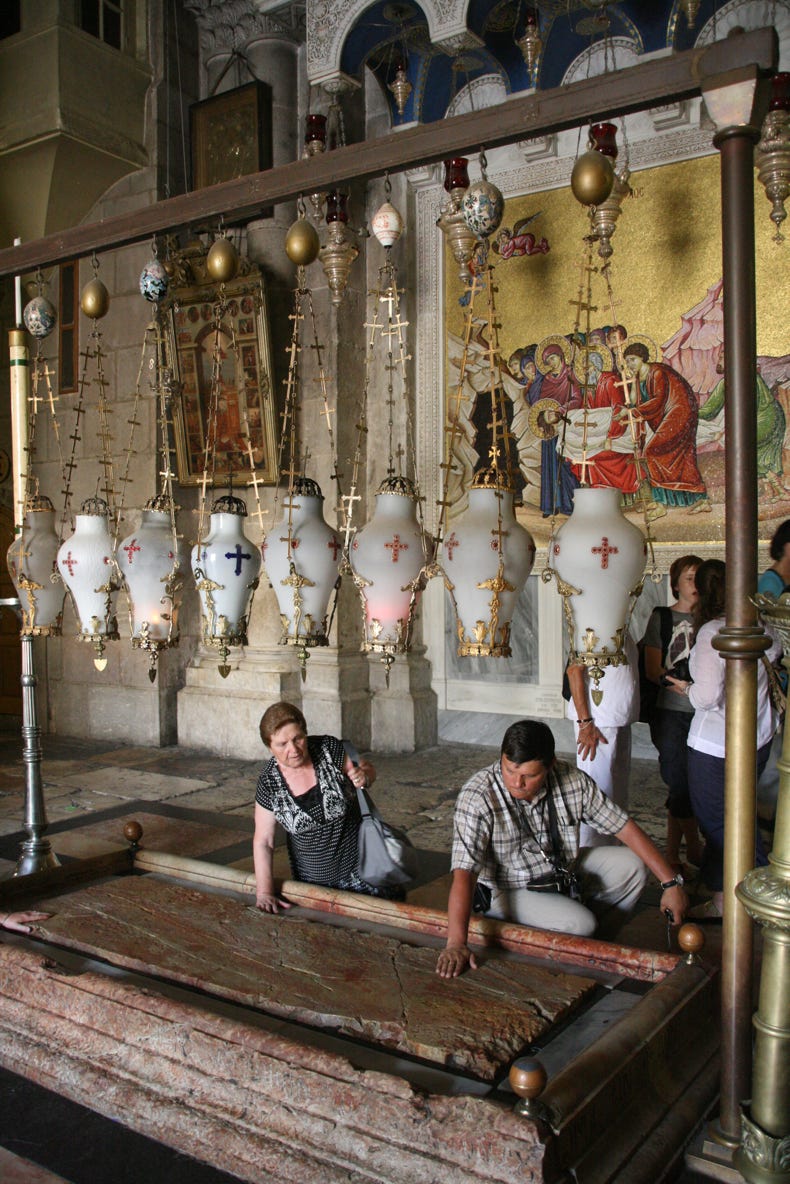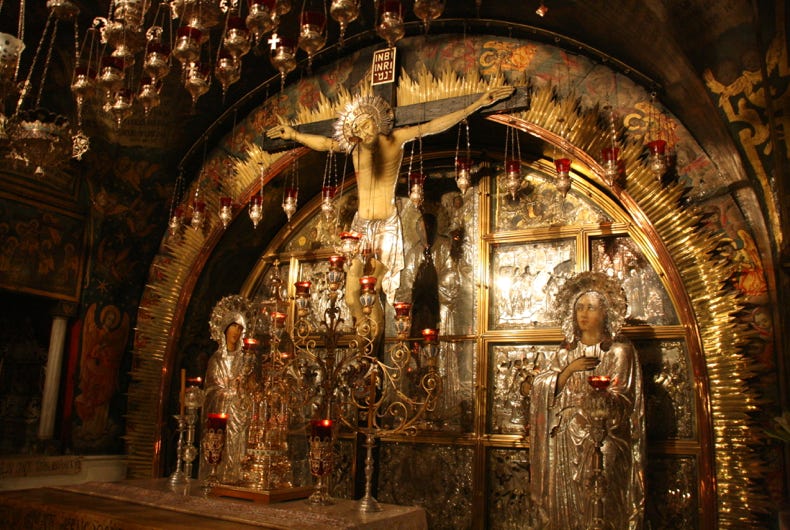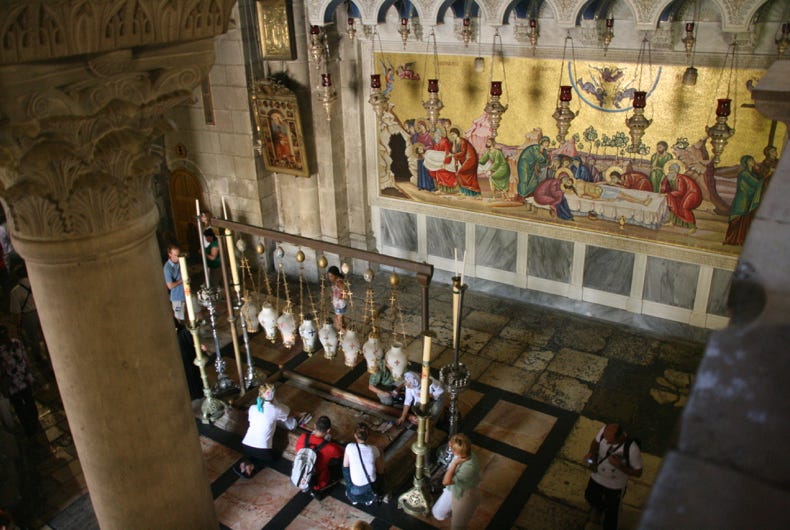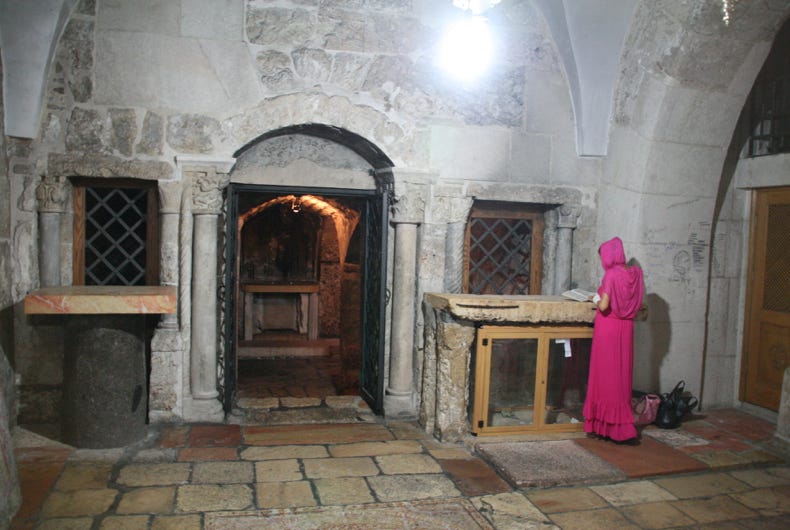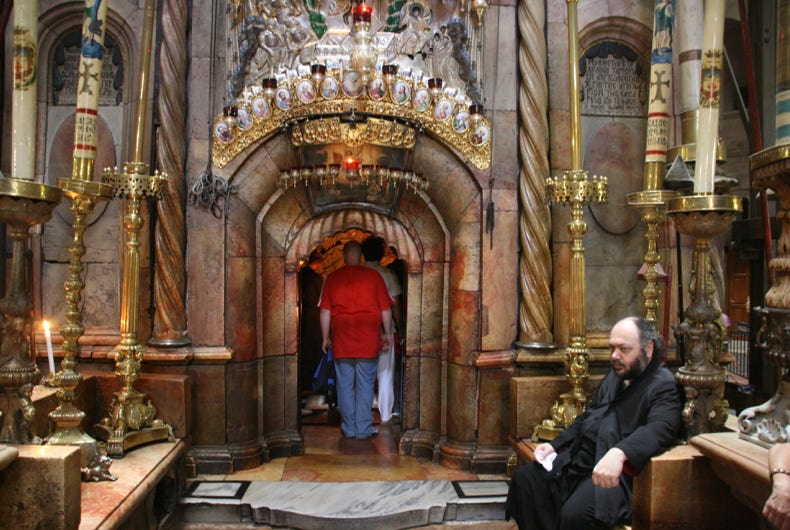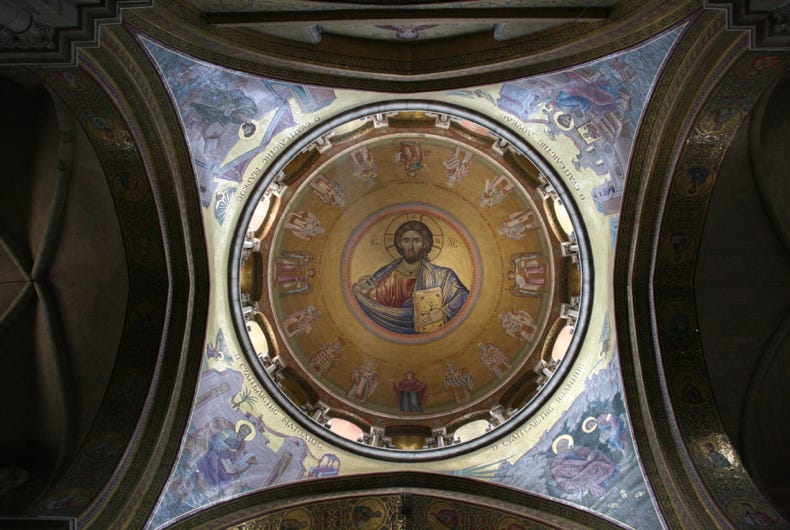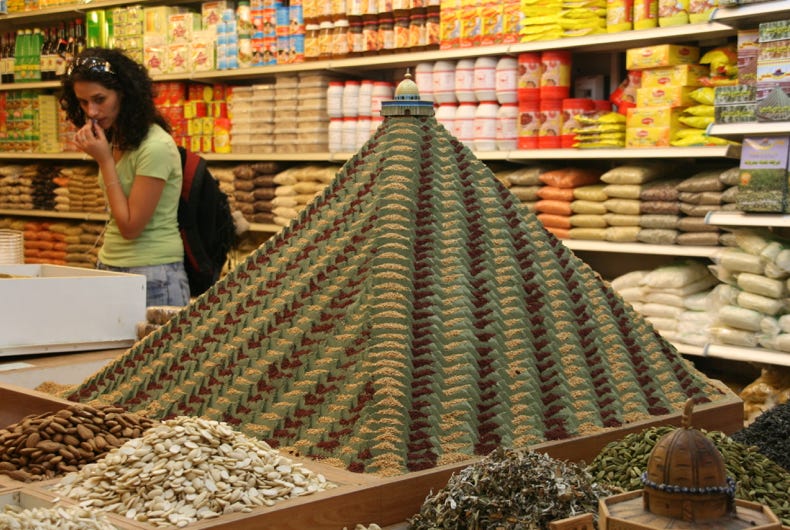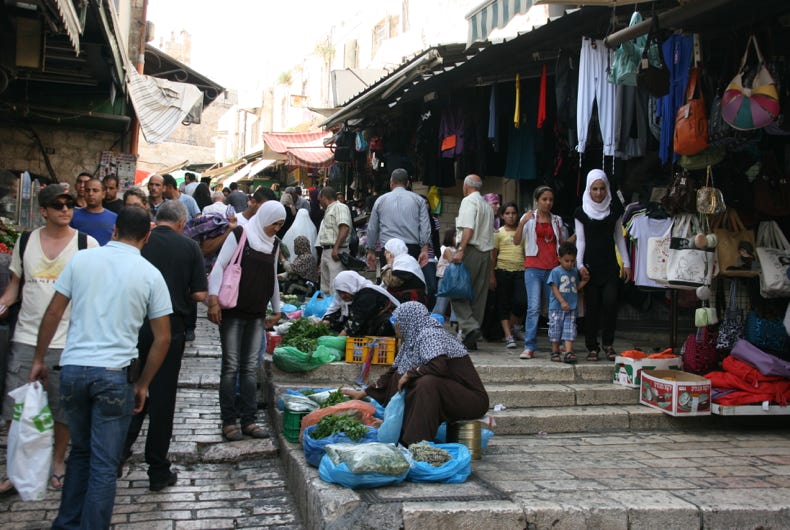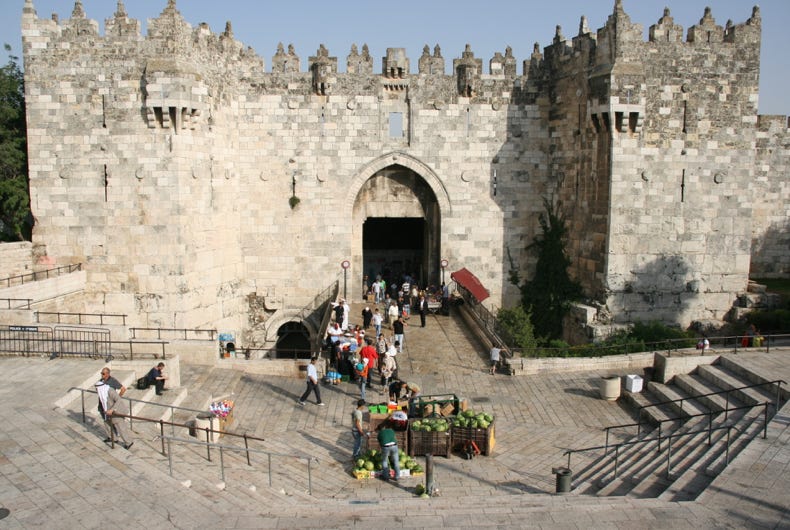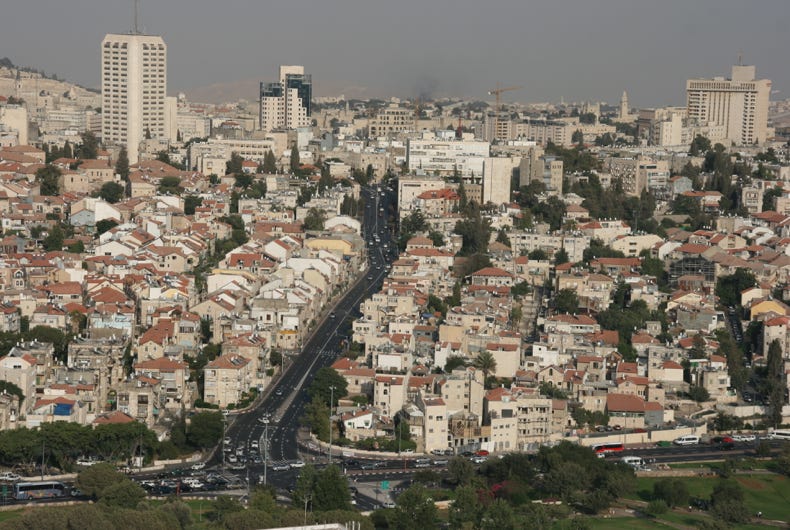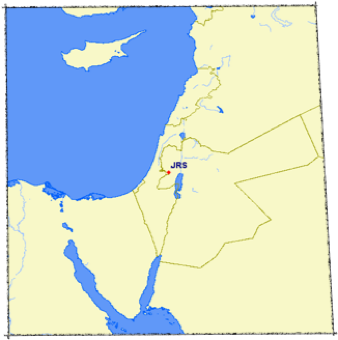
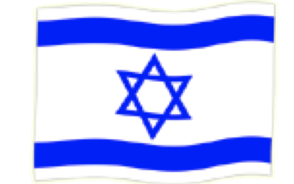

The 75 kilometre drive from Tel Aviv (on a beautiful, wide expressway where cars stayed in their lanes – usually) was like a drive from the developed, hedonistic West back into the secure conservatism of the Middle East. After a great breakfast at our hotel, we made our way to our car, traversing Tel Aviv’s footpaths with their distinctive decorations – hundreds of deliberately scattered name cards for brothels, each printed in full colour with ‘enticing’ pictures of some of the employees. Not unexpectedly, we have found nothing similar in Jerusalem (or elsewhere in the Middle East for that matter).
After a few wrong turns, we found our hotel, which was situated in New Jerusalem. (Note to myself: Google Maps locations are not always accurate – our hotel was shown on the site of the Israeli Knesset [Parliament] Building), and from the reaction of the security guard at the gate, we were not the first people to drive up and ask where our hotel had gone).
It was early afternoon before we headed out to our destination for the day, the Old City of Jerusalem. A short taxi ride brought the three of us to Jaffa Gate, the main entry point through the City Walls on the western side of the Old City. We then proceeded along the narrow laneways towards the eastern side of the Old City where we had our first glimpse of the Temple Mount – the site where Abraham almost sacrificed his son Isaac, where the Ark of the Covenant was stored in Solomon’s Temple, where Mohammed is said to have ascended to Heaven, and much more.
The Western Wall (also known as the Wailing Wall) has special significance for Jewish people as it is the only remaining part of the foundation of the Second Temple that was destroyed by the Romans almost 2000 years ago.
The main platform of the Temple Mount now supports the beautiful Mosque of the Dome of the Rock, built on the site where Abraham almost sacrificed his son. Being a mosque, the area is only open to non- Muslims for two one-hour periods each day, and being towards the front of the long queue, we were able to be inside for most of the 1:30 pm to 2:20 pm session.
Just below the Mosque of the Dome of the Rock is the smaller and older Al-Aqsa Mosque, converted from an older 6th century Christian Church on the site of the former temple market place where Jesus drove out the money changers. Although non-Muslims can walk around the outside areas of the Temple Mount, they are barred from entering either of the mosques. The detail of the exterior of the Mosque of the Dome of the Rock was exquisite.
The platform provided some lovely snippets of contact with Jerusalem’s Muslim people (especially when Di noticed a small two-month old baby in the arms of its young mother), and great views across to the Mount of Olives towards the east, and area we hope to explore tomorrow).
We were asked to leave the Temple of the Mount precinct right on 2:30 pm, so we exited and explored some of Old Jerusalem’s narrow laneways and covered markets. After a disappointing climb to a rooftop terrace that revealed little more than more rooftops covered with rusting satellite television dishes, we made our way northwards to what is perhaps Christianity’s most significant church within Jerusalem, the Church of the Holy Sepulchre. This somewhat sombre looking church is built on the site of Calvary, or Golgotha, the site where Jesus was crucified.
Archeological work during the 3rd century appears to to have confirmed the location, which at the time was still outside the city walls. A flight of stairs just inside the main entrance leads to an upper gallery where parts of the rocky summit of the hill can still be seen (through glass) on either side of an iconic (in the very literal sense of iconic = ‘lots of icons’) altar where the crucifixion is believed to have taken place.
The church is quite large, with several chapels having been added over the centuries in a somewhat organic manner, including one that is quarried into to the ground below the main building where the original three crosses were apparently found in the 3rd century confirming this as a crucifixion site. There is also a large monument within the main body of the church, known as the Tomb Monument, leading into what is believed to be the tomb where Jesus’ resurrection took place on the third day after his crucifixion; a tiny room just large enough for four people to enter at the time to kneel and pray.
The adjacent central section of the church is covered by a magnificent dome depicting Jesus, encircled by the 12 apostles and four archangels. Despite the large number of visitors passing through the Church of the Holy Sepulchre, the tone was reverent and dignified, enabling anyone passing through to reflect authentically on the huge significance of the event for which the church owed (and owes) its foundation.
It was fairly late in the afternoon by the time we left the Church of the Holy Sepulchre, so we headed north through more covered markets to the Damascus Gate, perhaps the most lively of Jerusalem’s gates with its thriving markets both outside and (especially) inside the gate. From there we took a taxi back to our hotel, enduring the excruciatingly slow crawl of Jerusalem’s afternoon rush hour traffic.
It has been a great introduction to Jerusalem and its rich history, tradition and daily life. Our plan for tomorrow (at this stage) is to remain in Jerusalem and explore this wonderful centre of history and culture in even greater depth.

